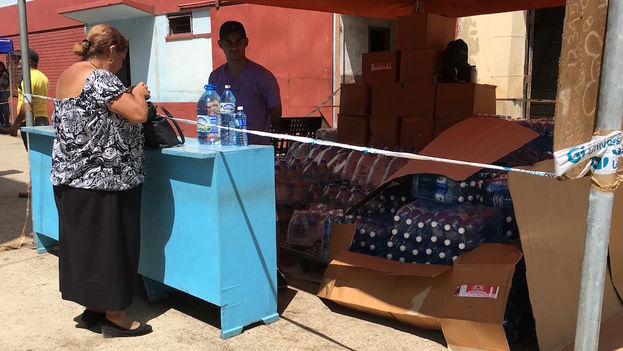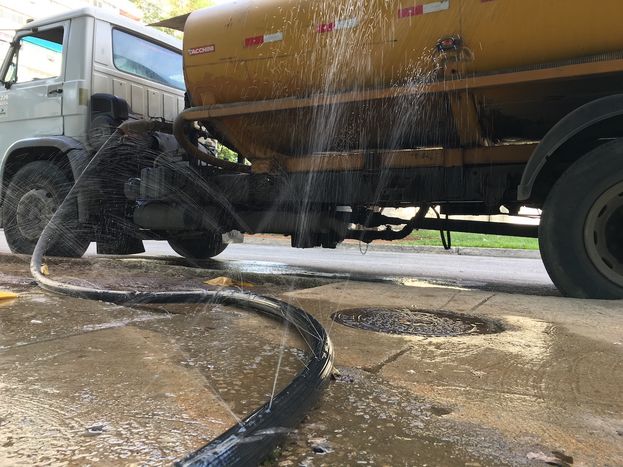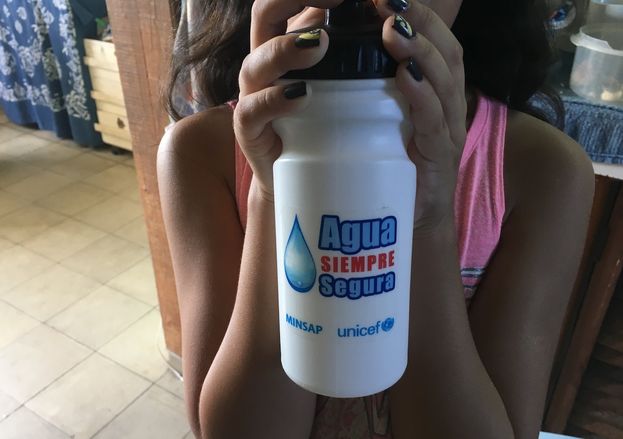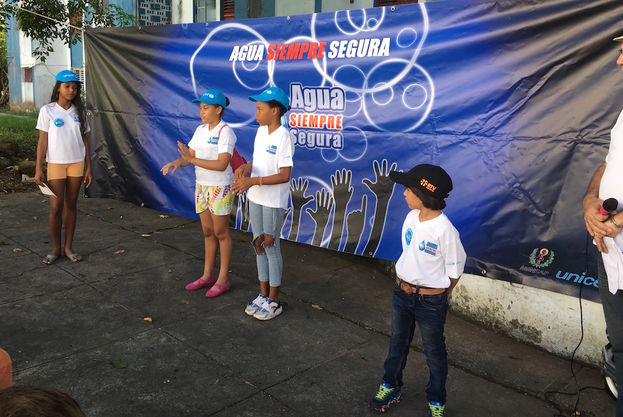
![]() 14ymedio, Luz Escobar, Havana, 1 November 2017 — When their daughter turned seven, the family stopped boiling its drinking water. “It took me a long time,” explains the mother in the gastroenterology office. Soon after, the little girl showed symptoms of being infected with amoeba, a parasite closely linked to the poor quality of drinking water on the island.
14ymedio, Luz Escobar, Havana, 1 November 2017 — When their daughter turned seven, the family stopped boiling its drinking water. “It took me a long time,” explains the mother in the gastroenterology office. Soon after, the little girl showed symptoms of being infected with amoeba, a parasite closely linked to the poor quality of drinking water on the island.
First came the discomfort, then the diarrhea and later the vomiting. By the time they went to the hospital, the diagnosis was evident: amebic dysentery. Now, the girl is under medical treatment and the parents have returned to the practice of boiling water. “You can’t trust the water that comes in the tanker truck,” reflects the grandmother.
Medical research conducted between 2013 and 2014 in Havana and Santiago de Cuba revealed that Cubans have a low perception of the risk of acquiring Acute Diarrheal Disease (ADD). In addition, most of the respondents said they consume the water as it is delivered via the trucks.
The study warned of the low consumption of boiled water in homes, most commonly motivated by lack of time or resources for cooking. According to data from the last census conducted in 2012, only 78% of homes cook with manufactured or liquefied gas.
Families that have only electric stoves or prepare their food with kerosene think twice before boiling water. “I can’t afford it and my electric bill goes through the roof if I start boiling all the water we consume in this house,” says María del Carmen, a resident of the city of Camagüey.
With a well in the yard, the woman recognizes that it would be best to “be safe” and give some additional treatment to the water that the family drinks. She, her husband and their two children have suffered repeated infestation by intestinal parasites. “When it’s not amoeba, it’s giardia,” she says.

Some residents opt for water filters, made in South Korea, which have been sold in the network of national stores. However, the authorities of the Ministry of Public Health (MINSAP) warn that these processors, manufactured with activated carbon and other elements, are not capable of eliminating the most dangerous bacteria and microorganisms.
Quality is not the only reason why many do not use filters. “They are very expensive, because at the very least they cost 65 convertible pesos (CUC) and the spare parts are never less than 10 CUC,” María del Carmen says with regret. For some months now, the Camagüey family has started using a 1% sodium hypochlorite solution to purify the water.
“The problem is that it is not always available in the pharmacies, so we spend several weeks drinking clean water and then we have to go back to the old habits because they don’t have the product in stock,” explains the mother.
In the tourist forums for trips to the island, the questions about whether travelers can consume water from the tanker trucks are many. The warnings not to do so are overwhelming and some tour operators even recommend traveling with chlorine tablets to use during the stay.
Owners of houses that rent to foreigners try to maintain a supply of bottled water, but the costs are high for a worker’s pocket. If an individual consumes between two and three quarts of bottled water daily, it would cost about 40 CUC per month to stock up, in a country where the average monthly salary is around 25 CUC.
An investigation carried out by the University of Miami pointed out some important problems that affect the potability of the island’s water. Among its basic observations is the existence of aged pipes that in many cases are “so corroded” that the liquid is often contaminated. The study pointed out that due to the water shortage “most Cubans have cisterns or water tanks” – where they store water for their own use due to the unreliability of the supply, whether by pipes or water trucks – while the lack of pressure is a problem in many multi-family buildings. In addition, the irregular disposal of garbage often ends up contaminating the stored water.

Helena Solo Gabriele, an engineering professor at Miami University who worked on the study, found that a good part of the problem in Havana comes from the aquifer system underneath the Almendares River.
“The river is receiving all the wastewater, and the water from the river infiltrates the aquifer, putting the drinking water at risk,” the specialist warned.
Although there are no updated official figures on the degree of infestation by amoeba or giardia among Cubans, the last national survey on the subject, conducted in 1984, showed that these parasites affected 7% of the population.
The United Nations Children’s Fund (UNICEF) has decided to take action on the matter and, together with MINSAP, has launched the “Always Safe Water” campaign in disadvantaged neighborhoods such as La Timba, in Havana and Chicharrones, in Santiago de Cuba.

The project estimates that by next year some 27,700 inhabitants of the areas where they have worked will have improved their hygiene behavior on hand washing, storage and use of safe water.
Dr. Oria Susana, specialist of the Department of Health Promotion at national level, warns those who store the precious liquid that “the quality of water deteriorates over time” and recommends that before using it “it is always necessary to chlorinate it.”
However, cisterns, elevated tanks and storage buckets will remain a part of the daily routine for Cubans for a long time, since just under 6% of the population has access to running water 24 hours a day.
The figures offered by the National Institute of Hydraulic Resources show that last year only 654,001 people could count on running water in their homes at any time of the day, a drop in numbers compared to 2015 when 1,036,686 consumers had this assurance.
“Wash your hands with running water and rinse the vegetables abundantly under the tap,” reads a poster outside the gastroenterology clinic of a Havana polyclinic. The mural also recommends boiling the water or chlorinating it so as not to get sick, while all those waiting in line to be treated believe they are infected with a parasite.
